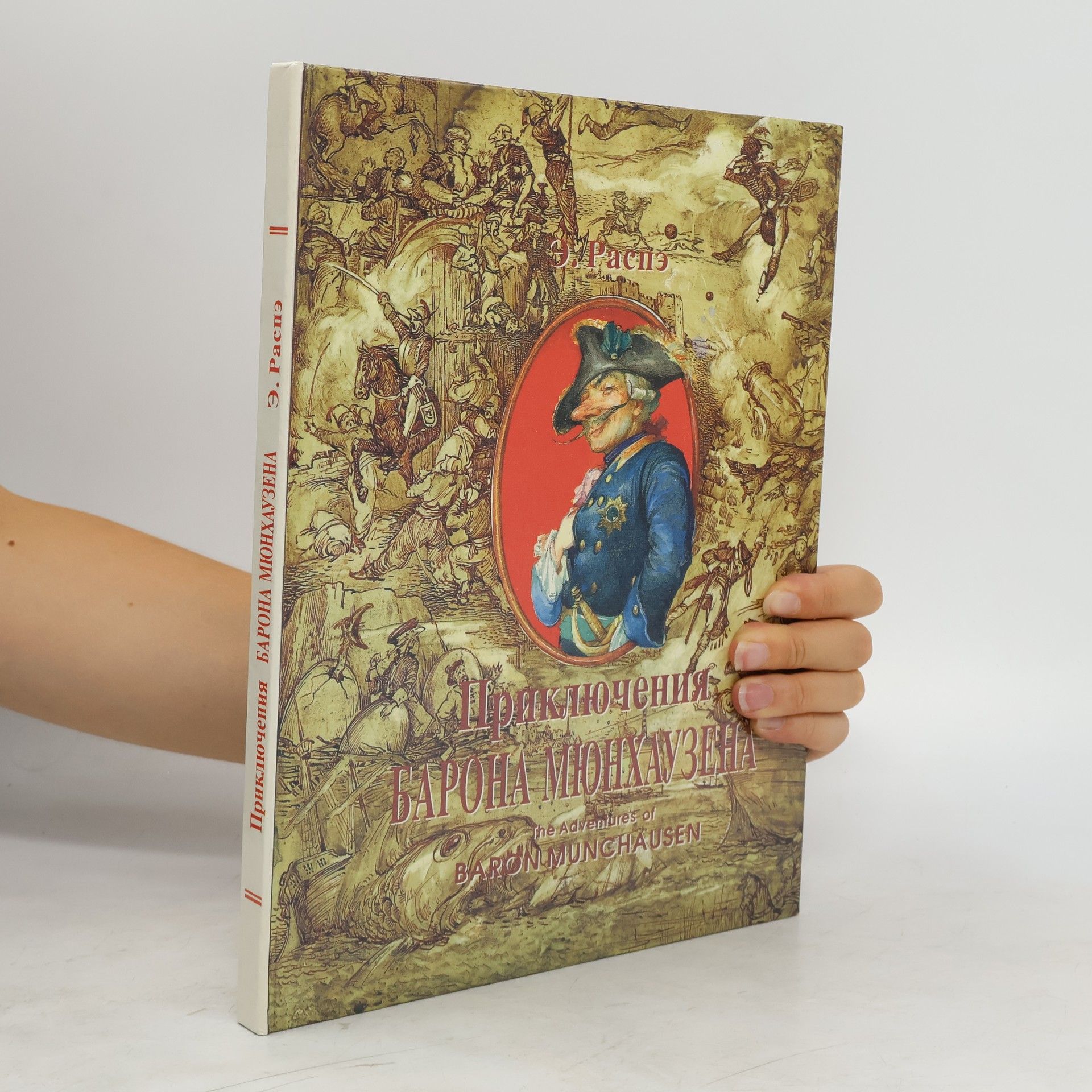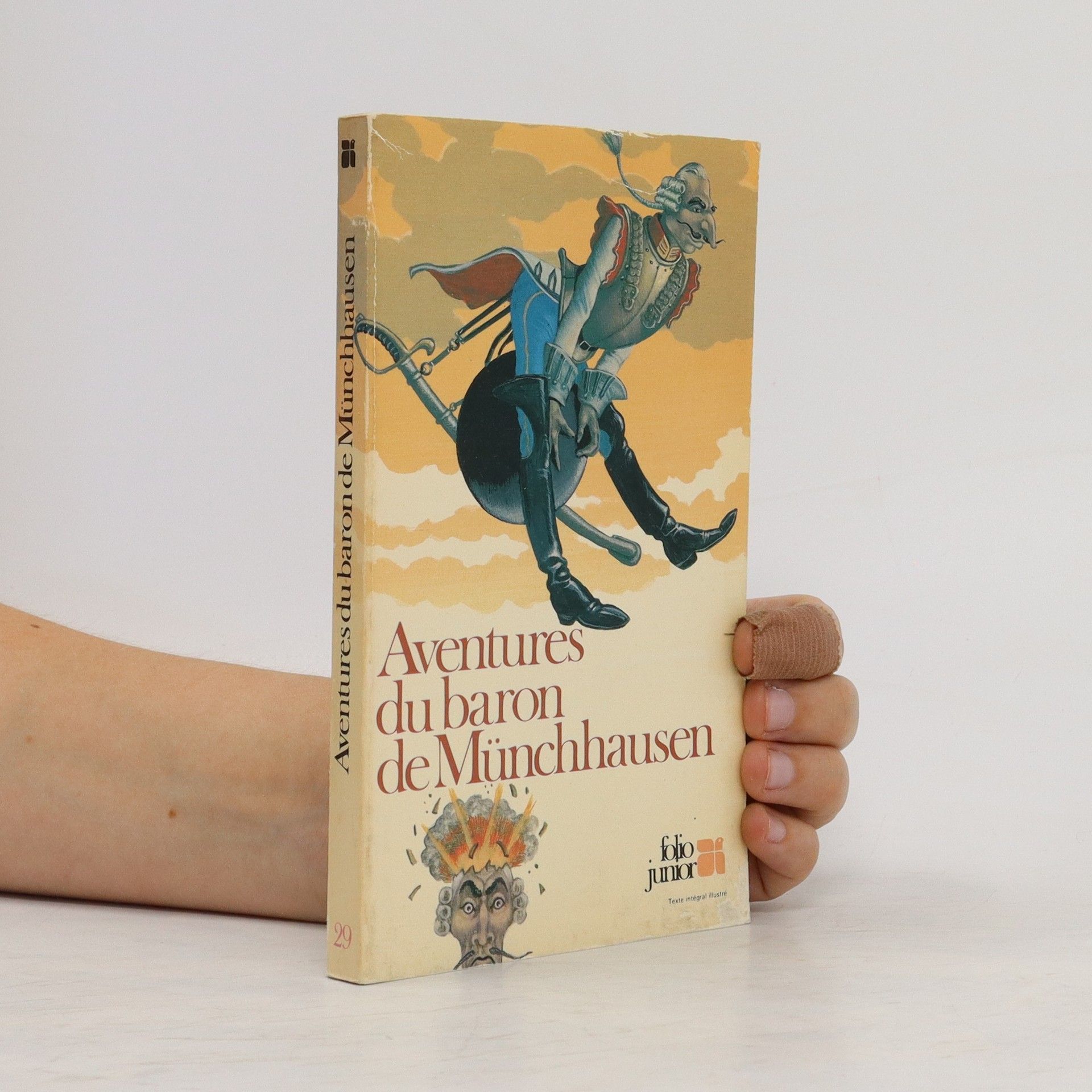Les exploits militaires du baron, officier allemand à la solde des Russes, lorsque celui-ci combattit les Turcs en 1740. Ces récits de guerre mêlés d'affabulations et d'absurde, de cocasserie et de fantastique consacrent la renommée de ce héros populaire.
Rudolf Erich Raspe Livres
Rudolf Erich Raspe était un bibliothécaire, écrivain et scientifique allemand, surtout connu pour sa collection de contes fantastiques. Ses œuvres présentaient souvent une satire et des connotations politiques, abordant des sujets variés allant de l'histoire de l'art à la géologie. Érudit polyvalent et aventurier, Raspe fut l'auteur de nombreuses publications et traductions, reflétant ses vastes connaissances et sa curiosité. Son œuvre la plus célèbre, qui inspira plus tard de nombreuses adaptations, fut initialement conçue comme une satire aux objectifs politiques.







Les extraordinaires aventures de l'extravagant baron de Münchhausen illustrées par Gustave Doré. Texte loufoque de présentation sévère.
- Les classiques illustrés - Illustrations originalesTexte intégralLivres brochés, couverture pelliculage brillant12,8 cm / 19,84 cm, papier crème (90g/m2)Police d'écriture Garamond avec ligatures
Baron Prášil / Baron Munchausen
- 176pages
- 7 heures de lecture
Karl Friedrich Hieronymus von Münchhausen (1720 – 1797) byl německý voják a cestovatel, který se stal pážetem vévody Antona Ulricha II a během rusko-turecké války odjel do Ruska. Zde se připojil k ruské armádě a zúčastnil se tažení proti Turkům. Po odchodu z armády v roce 1760 se vrátil do Bodenwerderu se svou první ženou. Vynikl jako vyprávěč, jehož přehnané a neuvěřitelné historky o dobrodružstvích zaujaly publikum. Po smrti manželky se ve 74 letech znovu oženil, ale brzy se rozvedl. Jeho příběhy byly během jeho života zpracovány do literární podoby, což mu nebylo zcela po chuti. V roce 1785 vydal v Londýně německý knihovník a spisovatel Rudolph Erich Raspe knihu, která se stala populární a byla přeložena do mnoha jazyků, což vedlo k téměř 100 různým vydáním. V češtině jsou známé jako příběhy barona Prášila. Na začátku 20. století vydal novou sbírku těchto příběhů americký humorista John Kendrick Bangs. Tato sbírka patřila do série Bangsových Associated Shades, známé jako Bangsiánská fantasy. Pro srovnání stylu a jazyka si mohou přečíst i několik kapitol z knihy Rudolpha Ericha Raspeho.
Přijměte pozvání na velkou výpravu za dobrodružstvím v doprovodu toho nejpovolanějšího a nejzkušenějšího průvodce, dokonalého vypravěče, skvělého společníka a muže mnoha dalších nepostradatelných kvalit – barona Prášila. Zažijete s ním pravou ruskou zimu, zdokonalíte se v umění lovu a jezdectví, poznáte spoustu zajímavých lidí a dokonce vám i poradí, jak se bezpečně a snadno dostat na Měsíc a zpátky. A to naprosto věrně a podrobně, protože vše, o čem vypráví, osobně prožil a vůbec, ale opravdu vůbec nic si nemusel vymýšlet. Německo - český zrcadlový text pro mírně pokročilé Nehmen Sie die Einladung zu einer großartigen Expedition für Abenteuer an, begleitet von dem professionellsten und erfahrensten Führer, dem perfekten Erzähler, einem großartigen Begleiter und einem Mann mit vielen anderen unverzichtbaren Eigenschaften - Baron Prášil. Sie werden mit ihm einen echten russischen Winter erleben, Sie werden die Jagd- und Reitkunst verbessern, Sie werden viele interessante Leute treffen und er wird Sie sogar beraten, wie Sie sicher und einfach zum Mond und zurück gelangen können. Und absolut treu und im Detail, denn er hat alles erlebt, worüber er persönlich spricht, und musste überhaupt nichts erfinden, aber eigentlich gar nicht. Deutsch-tschechischer Spiegeltext für Fortgeschrittene
Приключения барона Мюнхаузена
- 78pages
- 3 heures de lecture
В этом произведении отразились характерные черты немецких баронов и помещиков: некультурность, самоуверенность и хвастливое зазнайство. Когда книга получила известность, по имени Мюнхаузена стали называть людей, постоянно лгущих
Wundersame Reisen und Abenteuer des Freiherrn von Münchhausen
Wie er sie bei der Flasche im Kreise seiner Freunde zu erzählen pflegte
Hieronymus Carl Friedrich Freiherr von Münchhausen stammte aus dem Hannoverischen und lebte von 1720 bis 1792. Er war viele Jahre als Offizier in Russland und kämpfte in zwei Kriegen gegen die Türken. Mit viel Witz und Humor erzählte er bei einer Flasche guten Weines im Kreise seiner Freunde unglaubliche Kriegs-, Jagd- und Reiseabenteuer, die einer seiner Zuhörer heimlich aufschrieb und zum großen Ärger des Barons in seinem Namen veröffentlichte. Das machte ihn zwar weltberühmt, aber nicht als seriösen Landadeligen mit Humor, sondern als einen wilden Aufschneider und „Lügenbaron“. Dadurch wurden seine Aussagen selbst in einem Scheidungsprozess vor Gericht als unglaubwürdig und erfunden eingestuft. Diese Ausgabe enthält die kühnsten Geschichten der Fassung von 1786 in neuer Rechtschreibung mit vielen bunten Bildern bekannter Illustratoren, einem Nachwort sowie Anmerkungen und Glossar für den Schulunterricht.


